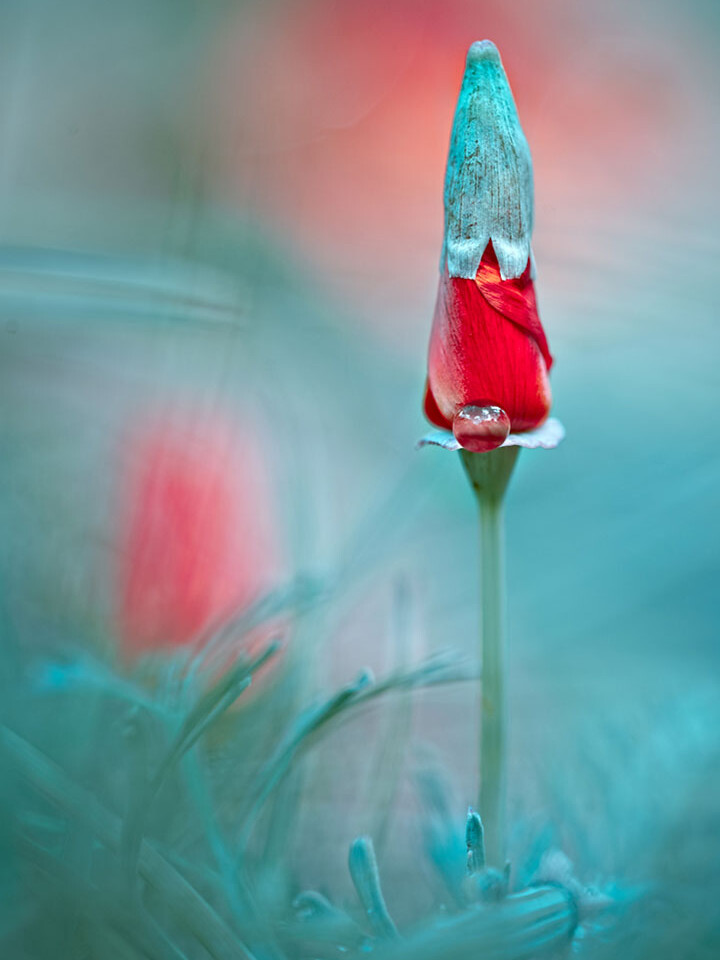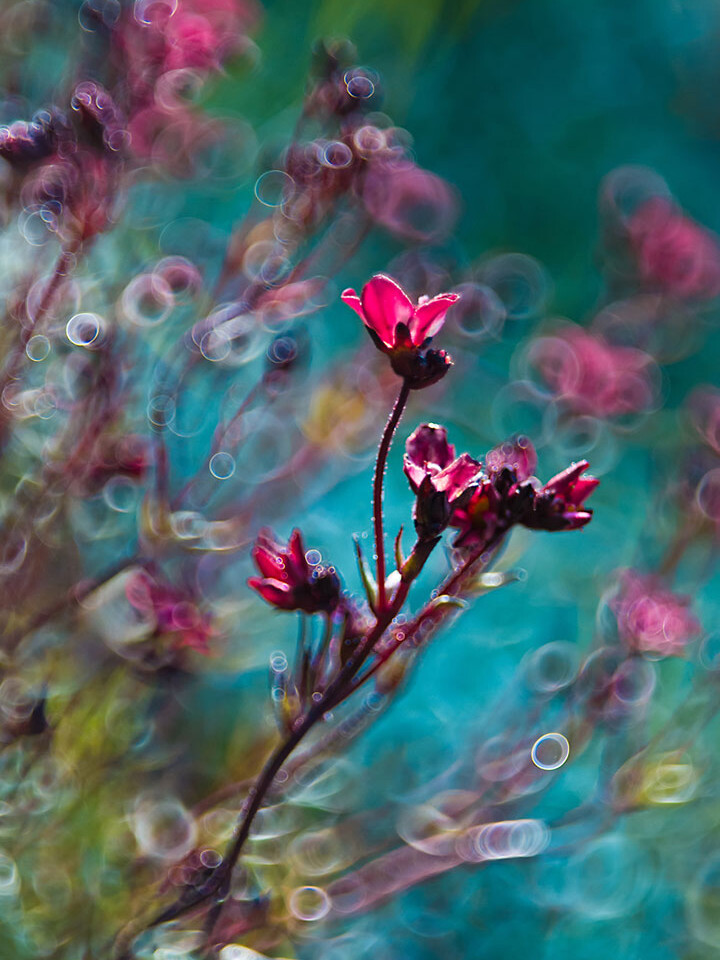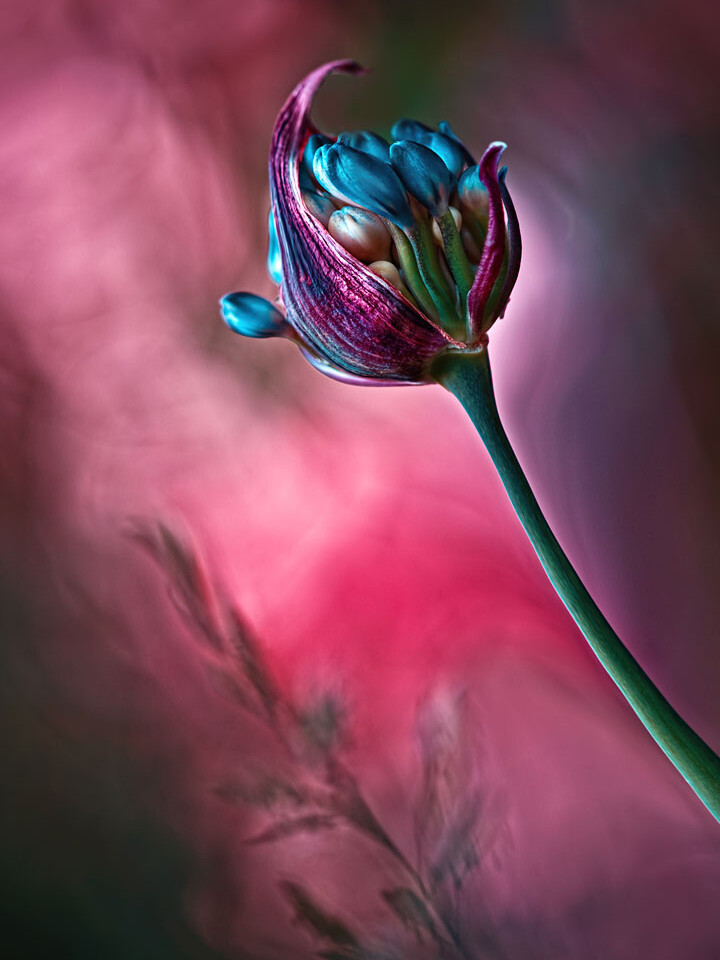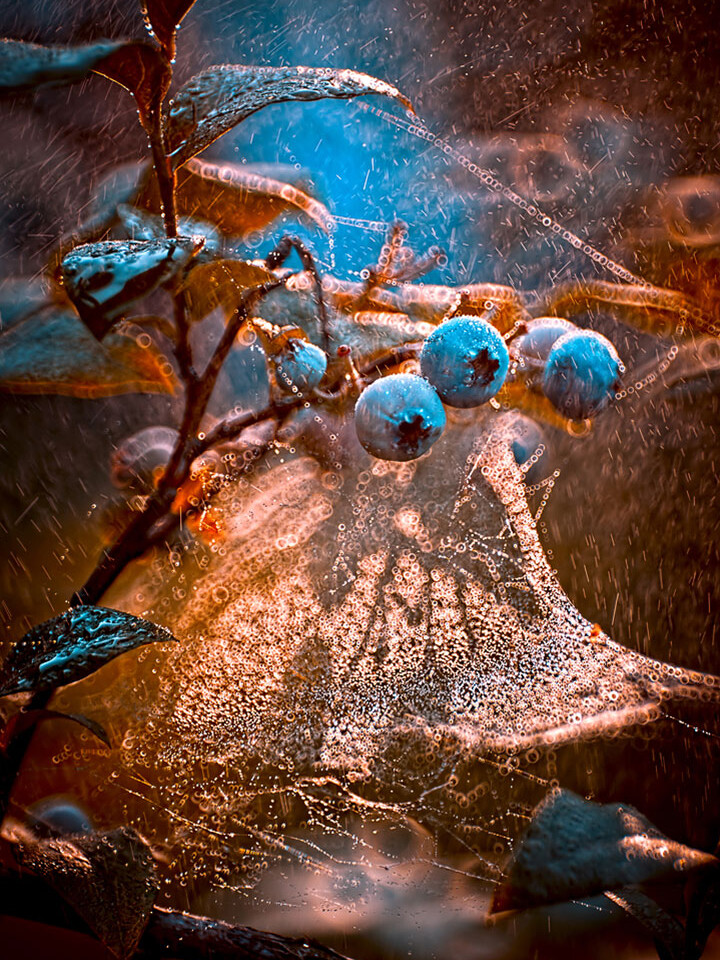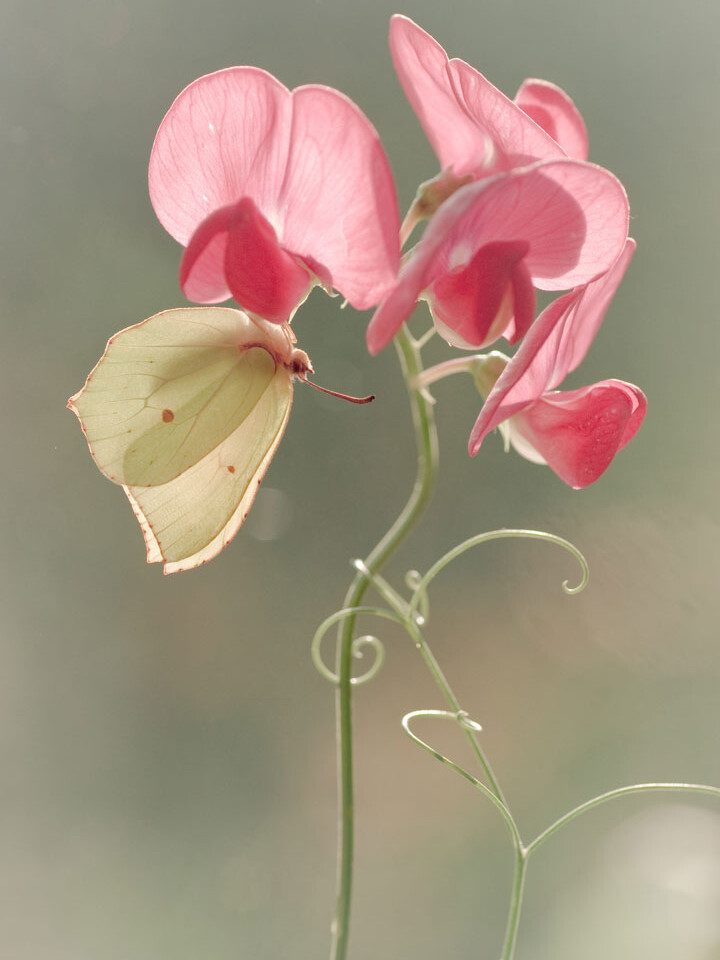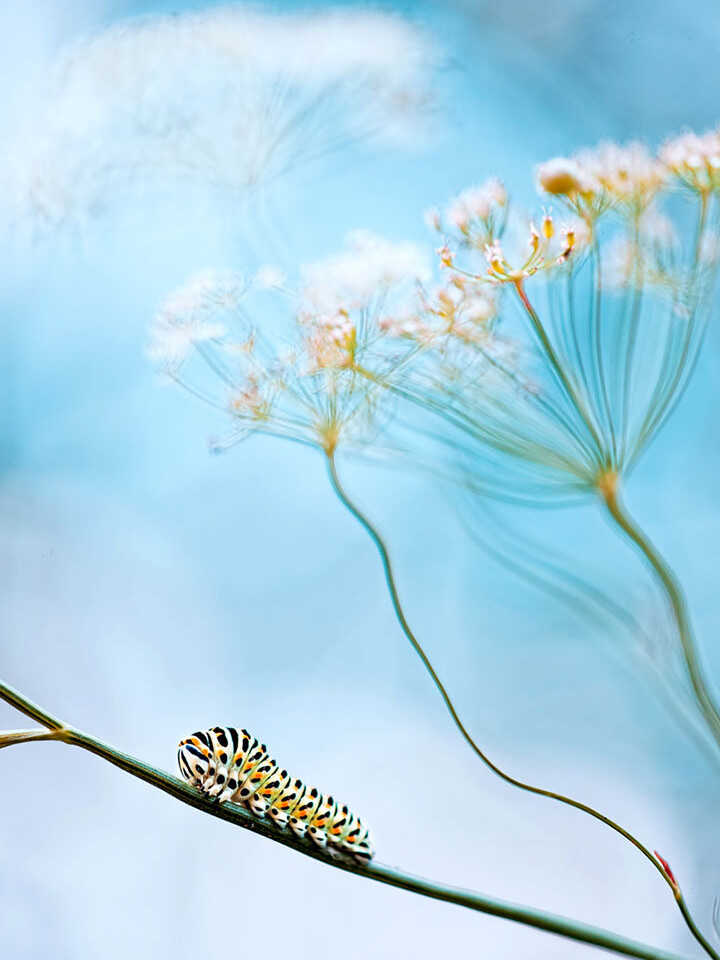ColorEdge Ambassador
Magda Wasiczek - Floral and macro photography
ColorEdge Ambassador Magda Wasiczek is a Polish photographer who has made a name for herself with her magical and inspiring floral and macro photography. She quickly become an influential figure in this field and her works can be seen at exhibitions worldwide.
Tell us your story – how did you get into photography?
The way I see the world, and how I then also photographed it, has a lot to do with my fascination with painting. I’ve always liked to draw and to paint, but I knew that I wasn’t good enough to study these fields at university. Although I didn’t pursue my career as a painter any further, I still felt the urge to express my artistic passion in some way.
You could say that I’m a child of digital photography. I’ve always liked to take photographs, but I only learned 12 years ago how to consciously create images. Initially, photography was a way for me to escape reality and to recharge my batteries. Little by little it became an occupation.
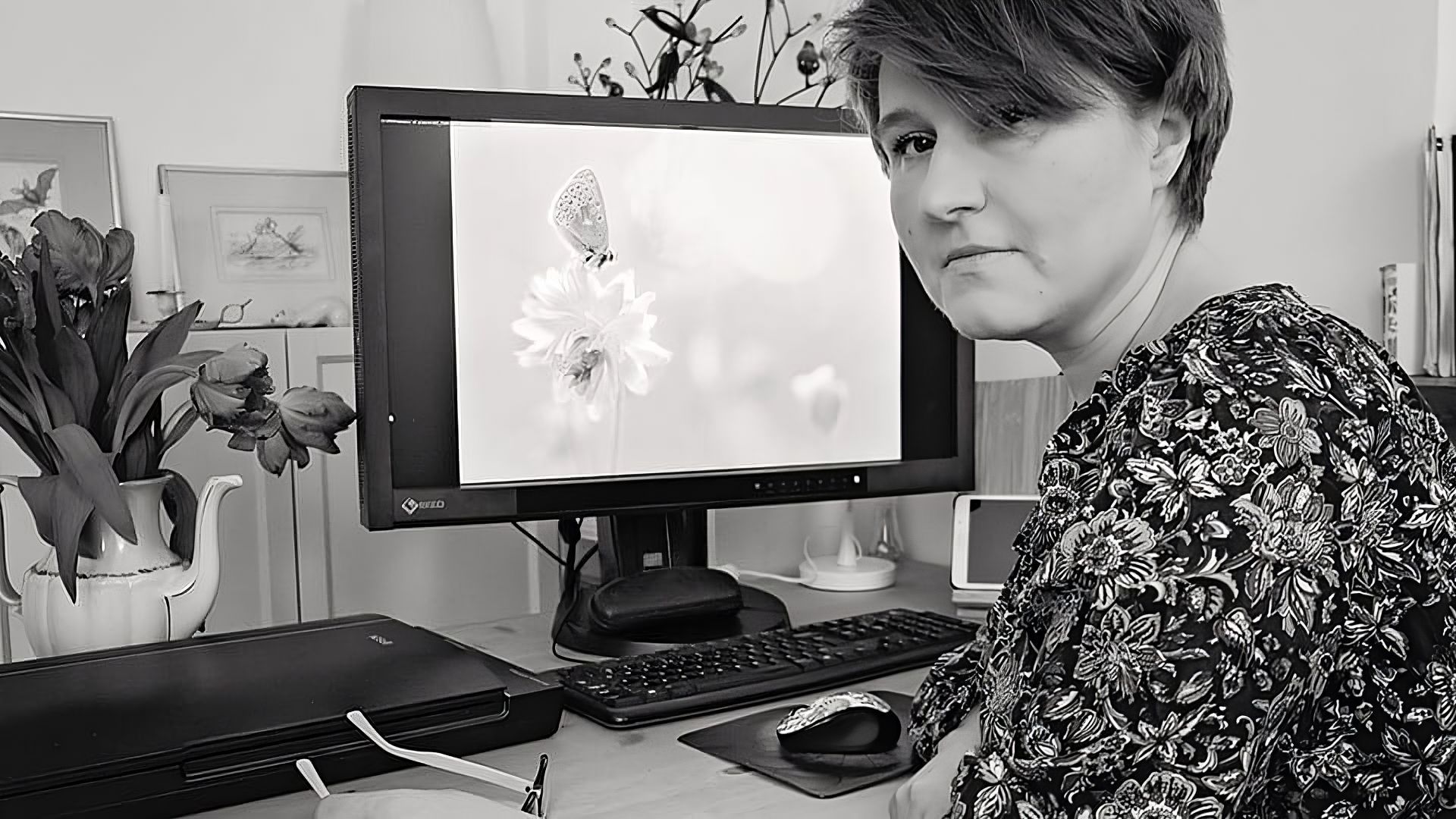
You’re a woman, an artist, a mother and a wife. How do these roles fit together? We all know that women today are expected to be versatile and do various things at once. But an office job is very different to artistic activities, which are more defined by emotions. Do you have a fixed work routine?
Have a work routine as an artist? I can’t imagine that! But in all seriousness, I think I was lucky. My husband has always supported me and accepted all the inconveniences that come with being married to an artist. My daughter is slowly becoming a strong, independent woman, and I think that is also to do with the fact I showed her how you can strike a harmony between your family life and your individual passion. In terms of my two sons, it does them good to help out around the house when I’m away or I’m working. Their future partners will definitely be happy about that!
My family knows that my work depends on the seasons and the weather. If I want to photograph a particular plant just as it blooms, or capture a weather event such as frost forming, I need to be in the right place at the right time. Plants and insects don’t wait for me and frost melts as soon as the first beams of sunlight hit it. What were colourful flower petals yesterday could be brown and unsightly today. If I’m not quick enough I have to wait an entire year for my next opportunity.
And you mentioned emotions – yes, they’re a part of it. This job is an emotional rollercoaster. Although we as artists are often oversensitive, this helps drive us.
Why did you decide on nature photography?
Actually, I try and avoid referring to categories like ‘nature photography’ or ‘macro photography’. With the exception of my very first photographs, my work has no clear definition. For a long time, I couldn’t describe what I do until I came across an excerpt from an interview with Wojciech Weiss from 1934. He was a Polish painter in the ‘Young Poland’ movement. He expressed my feelings in words:
“I’m not a naturalist who writes a chronicle of life; I’m not a realist who precisely describes nature; for me, painting is about my visual experience – and my feel for colour. I’d like my pictures to express the emotions that I felt when I was in contact with nature and her most unbelievable phenomena. For me, it’s about creating a harmony of colours, a symphony of hues, which have the right to exist in and for themselves”.
As a mother of three children, I had to spend a few more years at home. Going off on longer trips, for example for outdoor shots in distant countries, wasn’t possible. But I had my own garden, surrounded by a fence with meadows behind it – perfect conditions for me to dive into the world of flora and fauna with my camera.
What really excites me is that the world of plants and gardens represents an infinite source of inspiration, which is really important to me because I love working with new tools, new ideas and unusual images. I’m constantly planning new projects to photograph flowers and insects. My aim is to throw the spotlight onto the stereotype of floral photography, which is that it’s something you grow out of, and question it.
What makes your images so special?
After my initial enthusiasm for extreme magnification, detail reproduction and resolution, I noticed things and took them in differently. Instead of traditional macro photographs, I started taking increasingly more painting-like, impressionistic photographs in which the interplay of colour and light takes on a bigger role than a precise representation of the world around me.
When I discovered lenses with the M42 port, I knew that I was on the right path. The first comments I received about the painting-like quality of my photos supported my belief. Old lenses have a plasticity to them that modern lenses can only dream about. They might not be perfect as far as optics go, and they have other weaknesses, but that makes them unique, and it’s this uniqueness that’s especially important to me.
These days, it’s not difficult to create images that are technically flawless anymore. The real challenge is taking photos that stand out from the rest. When done correctly, the bokeh of older, manual lenses creates a structure similar to the brushstrokes of a painter on a canvas. I fell in love with this ‘crumpled’ background and its lack of digital tidiness and perfect resolution that we see with modern lenses. This is an integral part of my style today.
Your work is full of vibrant colours and often you use painting tools. Do you need a lot of time for post-processing?
Colour is extremely important in my photos, it’s how I differentiate myself from others. I like it when a photo is colourful; it only changes the intensity of the hue. During my first adventures with the camera I used heavily saturated colours. Then I moved on to pastel colours; my photos from around this time were very light and had a white or pale background. Later, I went back to colours, but this time they were darker, heavier, which also again reflected my feelings and my sense of femininity.
I never wanted to show the world how it is. There are a lot of photographers who can do that better than me. For me it’s about presenting my vision of the world – a fairy-tale paradise. I would hope that my images help people to find their inner child, even if it’s just for a moment. If you look at the world with the eyes of a child, it’s always more exciting, more colourful and full of surprises.
My aim is to create as many effects as possible in the image itself so that I don’t need to do as much post-processing as you might think. In principle, I only change the colours and play with the slides a little bit.
You’ve been using an EIZO monitor for some time now – has that affected your way of working?
Like I said before, colour is very important for me, so I have to be able to trust 100% that what I see on the screen is precise.
Interestingly, the first monitor I ever used for my work was a 19-inch EIZO FlexScan S1931. It was an office monitor so there were no functionalities such as calibration, but I wouldn’t have known how to use those at the time anyway. The FlexScan S1931 had such good colour reproduction that when I later went to buy a high-quality graphics monitor, I knew immediately which brand I would choose. I stayed with EIZO and have never been disappointed.
Find out more about Magda Wasickek:
Website >
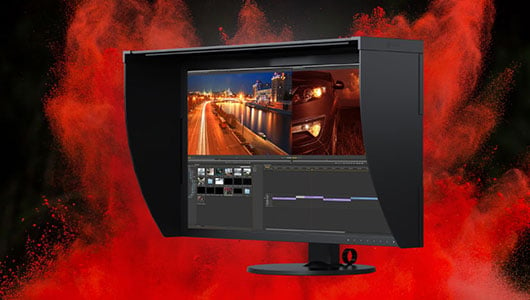
DISCOVER
ColorEdge graphic monitors from EIZO
Discover our ColorEdge monitors – the professional image editing monitors for photo, media and video editing.
